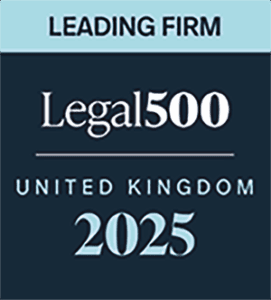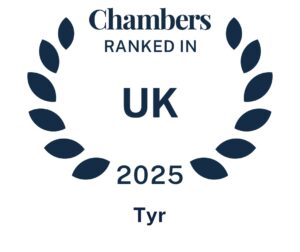
On 8 July 2025, Mr Justice Fancourt handed down judgment in the High Court right of light case of Cooper & Powell v Ludgate House Ltd [2025] EWHC 1724 (Ch).
BACKGROUND
Mr Cooper and Mr Powell (the “Claimants”) leased flats at Bankside Lofts, London near to a new 19-storey office building, named Arbor, owned by the Defendant. Arbor forms part of a multi-tower scheme called Bankside Yards immediately to the west of Bankside Lofts (the “Development”). Mr Cooper claimed his principal bedroom suffered an actionable reduction in light due to the erection of Arbor and Mr Powell claimed his living room was affected by the same. As such, the Claimants sought an injunction requiring the Defendant to demolish substantial parts of Arbor or in the alternative, sought damages for the diminution in value of their flats caused by the nuisance.
Following completion of the development of Arbor, Southwark Borough Council granted the developer statutory protection in relation to the Development under section 203 Planning Act 2016 (the “Protection”). This granted the Defendant protection that its building works could proceed even if established rights, such as light, are interfered with.
The Judgment
Mr Justice Fancourt held that in assessing whether Arbor caused actionable loss of light, the correct approach was to disregard any light that would inevitably be lost by completion of the Development as the Claimants could not protect that light. The Claimants did not agree with this.
A question arose as to whether the Waldram method was still the best and most appropriate way of measuring loss of light. The Waldram method is relatively simple. It considers the light received directly from the sky at each point in the room at table height. If the light at any point is more than 0.2% of the light received from the entire sky dome (which in round figures on a dull day is assumed to be 5000 lux), that specific area of the room is deemed to be lit to at least 10 lux. This achieves what is, or at least was, considered the standard of light you need to pass the test of sufficient light according to the ordinary notions of mankind.
Mr Justice Fancourt held that the Waldram method was the most appropriate method. He said it provided certainty and is fit for purposes in straightforward cases, such as this. When applying the Waldram method to this case, Mr Justice Fancourt held that Arbor caused a substantial adverse effect on the ordinary use and enjoyment of the Claimants’ flats.
The Claimants request for an injunction was refused and the Court considered the broader picture. Demolition of Arbor would have inflicted major cost on the Defendant, resulted in significant waste, and due to the Protection, would have likely been followed by reconstruction that sidestepped any further rights of light challenges. It was therefore said that the harm caused to Arbor and its tenants by the grant of an injunction would be disproportionate to the harm caused to the Claimants by the interference with their light. The public interest in retaining Arbor was also a strong factor. Weighing up both remedies, the Court sided with the option of awarding damages in lieu of an injunction.
The Claimants were not awarded damages for diminution in value of their flats but instead, they were awarded ‘negotiating damages’ for the loss of the right to enforce the right to light. Such damages were awarded based on a hypothetical negotiation that seeks to determine the amount a defendant would reasonably have agreed to pay to be released from their obligation, in this case, the Defendant’s obligation not to compromise the Claimants’ right of light.
Previous Court guidance states that negotiating damages require the Court to simulate the bargain that would have been struck just before the wrongful act. Key inputs in this case included:
- The additional development value by proceeding with Arbor in its existing form.
- The court’s starting point is that a reasonable developer would have agreed to put aside 10% – 15% of the increase in value as a settlement fund for rights of light claims.
- Apportionment based on each flat’s contribution to the overall constraint.
Considering the above inputs, Mr Cooper was awarded £350,000 and Mrs Powell was awarded £500,000 in damages. This is believed to be the highest negotiating damages yet sent in this area of law.
Conclusion
This judgment provides clarity on the measurement techniques used in right of light cases along with the availability of negotiating damages and the factors that steer the court away from injunctive relief. It also provides a reminder of the commercial risk for developers attached to rights of light.
Contact details
eleanor.tordoff@tyrlaw.co.uk +44(0)7908 190547 +44(0)113 322 8240



